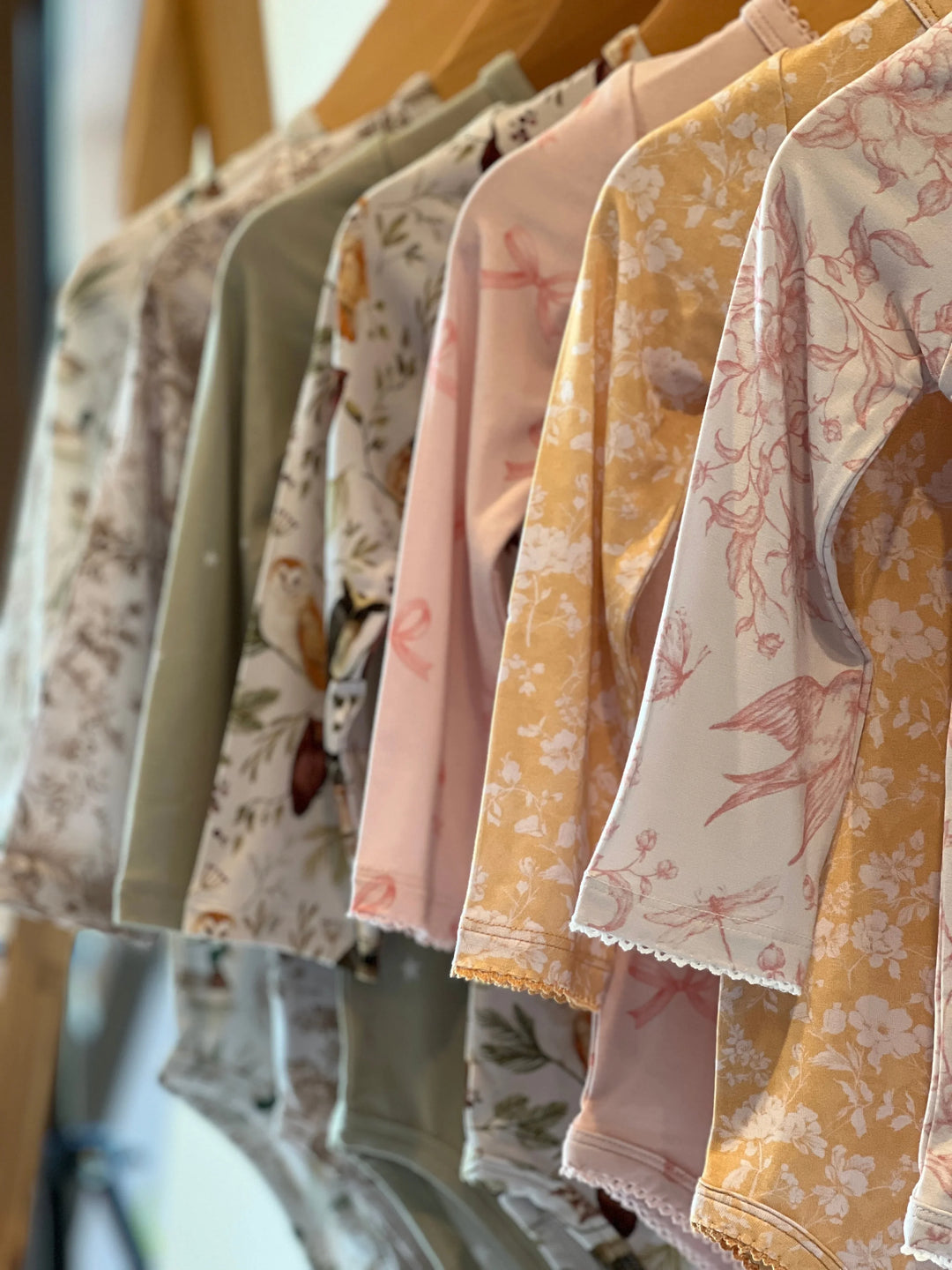Complete Guide to Choosing the Best Fabric for Baby Clothing
Selecting the perfect fabric for your baby's clothes is more than just finding the softest touch. Instead, it's about considering multiple factors, including how gentle it is on their sensitive skin, whether it's free from icky chemicals, and how comfy it feels. Every pick can affect your baby's snugness, safety, and ability to chill or stay warm.
Choosing the right fabric means you're giving your baby the ultimate cozy experience and safeguarding them from all sorts of temperature swings. This article is going to dive into the coolest fabrics for baby clothes, looking at comfort, durability, and how kind they are to delicate skin. From cotton's soft embrace to wool's warmth, we'll guide you through the maze of choices.
Key Factors to Consider When Choosing Baby Clothes
When choosing baby clothes, there are several key factors to consider to ensure your little one is comfortable, safe, and stylish:
- Fabric Quality: Opt for high-quality, natural fabrics like bamboo, which is soft, breathable, and gentle on your baby’s sensitive skin. Bamboo is also known for its moisture-wicking and temperature-regulating properties, making it an ideal choice for baby clothing.
- Comfort: Look for clothes that are designed with your baby’s comfort in mind. Soft, stretchy fabrics that move with your baby, as well as flat seams and tagless labels, can help prevent irritation and discomfort.
- Safety: Safety is paramount when it comes to baby clothes. Avoid items with small buttons, loose threads, or decorations that could pose a choking hazard. Additionally, look for clothes that are free from harmful chemicals and dyes.
- Ease of Dressing: Babies require frequent changes, so choose clothes that are easy to put on and take off. Look for features like snap buttons, wide neck openings, and elastic waistbands that make dressing and diaper changes more convenient.
- Durability: Babies grow quickly, so it’s important to choose clothes that are durable and can withstand frequent washing. High-quality fabrics like bamboo are not only comfortable but also long-lasting.
- Size and Fit: Make sure to choose the right size for your baby, keeping in mind that babies grow at different rates. Clothes that are too tight can be uncomfortable, while those that are too loose can be hazardous.
- Style and Design: While comfort and safety are top priorities, you also want your baby to look adorable. Sophia Rose offers a range of stylish designs, from cute prints to chic solids, so you can find outfits that suit your baby’s personality.
- Seasonality: Consider the season and climate when choosing baby clothes. Lightweight, breathable fabrics are ideal for summer, while warmer materials like bamboo fleece are perfect for cooler weather.
- Eco-friendliness: If sustainability is important to you, look for brands like Sophia Rose that prioritize eco-friendly practices and materials, such as organic bamboo, which is not only gentle on your baby’s skin but also kind to the environment.
By keeping these key factors in mind, you can ensure that you’re selecting the best clothes for your baby’s comfort, safety, and style.

Common Types of Fabrics for Baby Clothes
From the soft embrace of bamboo to the classic touch of cotton, various fabrics offer different benefits suitable for a baby’s delicate skin.
Bamboo
Bamboo baby clothes are a popular choice due to its incredible softness, which is gentle on sensitive skin. It’s derived from the natural bamboo plant and is known for its breathability, moisture-wicking properties, and thermal regulation. Bamboo swaddle blankets and baby clothes are also hypoallergenic and eco-friendly, making them an ideal fabric for babies who need extra care and for parents who prioritize sustainability.
Organic Cotton
Organic cotton is cotton that is grown without the use of harmful pesticides or synthetic fertilizers, making it safer for a baby’s skin and the environment. It’s highly regarded for baby clothes because of its softness, breathability, and durability. Organic cotton is also easy to wash and maintain, ensuring that it remains gentle on your baby’s skin wash after wash.
Muslin
Muslin is a lightweight, finely woven cotton fabric known for its breathability and softness, which increases with each wash. It’s often used for baby swaddles, blankets, and lightweight clothing, especially in warmer climates. Muslin’s open weave allows air to circulate, helping to keep your baby cool and comfortable.
Wool
Wool is a natural fiber that’s valued for its ability to regulate temperature, making it suitable for both warm and cool weather. For baby clothes, merino wool is often preferred because it’s softer and less irritating than regular wool. It’s also moisture-wicking and odor-resistant, providing comfort and freshness for your little one.
Jersey Knit
Jersey knit is a stretchy, soft fabric made from cotton or a cotton blend. It’s commonly used for baby clothes like onesies, leggings, and t-shirts due to its flexibility and comfort. The knit structure allows for breathability and movement, making it perfect for active babies.
Linen
Linen is a natural fiber made from the flax plant, known for its durability and breathability. While it’s more commonly associated with adult clothing, linen is also used for baby clothes, particularly in warm climates. Its natural antibacterial properties and ability to wick away moisture help keep your baby’s skin dry and comfortable.
Choosing the Right Fabric for Your Baby's Clothes
So, you’ve learned a lot about picking the right fabric for your little one’s clothes. Your baby’s comfort and safety should always come first when you’re shopping for their clothes. You’re now ready to make the best choices for your little one. Happy shopping!





